Do you have a question about the Hitachi S1 Series and is the answer not in the manual?
| Output Frequency | 0 - 400 Hz |
|---|---|
| Overload Capacity | 150% for 60 seconds |
| Frequency | 50/60 Hz |
| Control Method | Sensorless Vector Control |
| Protection Functions | Overcurrent, Overvoltage, Undervoltage, Overheat, Short Circuit |
| Communication | RS485, Modbus RTU |
| Output Voltage | 3-Phase 200-240VAC, 3-Phase 380-480VAC (Matches Input Voltage) |
| Cooling Method | Fan Cooled |
Defines terms like Danger, Warning, and Note for safety context.
Illustrates symbols used for warnings: Danger, Warning, Forbid, Hot, Electric shock.
Provides essential safety rules for handling, installation, and operation.
Checks for damage and model consistency upon receiving the product.
Verifies load type, current, precision, grid voltage, and required functions.
Confirms ambient temperature, humidity, and site conditions for proper operation.
Checks cable capacity, accessory type, grounding, spacing, and cleanliness.
Covers motor parameter setup, autotuning, and initial operation settings.
Explains the inverter's main circuit function: AC to DC, then DC to AC conversion.
Details input/output voltage, current, frequency, control modes, and performance.
Describes information found on the inverter's nameplate for identification.
Explains how to interpret the model's type designation for product information.
Provides input/output current and power ratings for different models.
Illustrates the physical layout of inverter components and terminals.
Covers installation environment, direction, and modes like wall, flange, rail mounting.
Details wiring diagrams for main circuits of AC 1PH and 3PH inverters.
Provides wiring diagrams for control circuits, input/output signals, and communication.
Explains protection measures for short-circuits and preventing thermal overload.
Describes the LED keypad for controlling inverter start/stop and setting parameters.
Explains display states: stopping, running, fault, and function code editing.
Details how to modify function codes, set passwords, and watch inverter states.
Covers terminal connections and common commissioning procedures for inverter setup.
Categorized list of function codes with names, descriptions, default values, and modification attributes.
Parameters for speed control mode, running command channel, and output frequency settings.
Parameters for start modes, DC brake, acceleration/deceleration, and stop modes.
Parameters for speed loop PI, torque control, and flux weakening for vector control.
Explains how alarms and faults are indicated via TRIP indicator and keypad display.
Describes methods to reset inverter faults using keypad or power cycle.
Details how P07 group parameters record the latest fault types and data.
Provides a systematic approach to diagnosing and resolving inverter faults.
Flowcharts for diagnosing common issues like motor failure, vibration, and overcurrent.
Addresses interference issues with sensors, communication, cables, and chassis.
Outlines routine inspection items for ambient conditions, voltage, keypad, and main circuit.
Information on cooling fan service life, replacement, and fault indications.
Details capacitor reforming procedures and electrolytic capacitor replacement.
Guidance on power cable inspection and connection for safety and operation.
Explains Modbus as a standard industrial communication language for controllers.
Details RTU mode, RS485 interfaces, connection diagrams, and frame structures.
Describes command codes for reading/writing data, and provides examples.
Lists common communication issues like no response or exception responses and their causes.
Discusses inverter capacity selection and derating due to temperature, altitude, and frequency.
Specifies grid voltage requirements and short-circuit capacity standards.
Details motor types, voltage, short-circuit protection, frequency, and carrier frequency.
Provides maximum motor cable lengths meeting EU EMC directive requirements.
Lists compliance standards including safety, EMC, and electrical requirements.
Explains EMC requirements and application environment categories (C1-C4).
Shows diagrams for keypad structure and installation brackets for 400V models.
Diagram illustrating the internal components and layout of the inverter unit.
Provides detailed dimensions for rail-mounting, wall-mounting, and floor-mounting.
Illustrates external wiring for accessories like keypad, reactors, filters, and brake units.
Notes on power supply voltage class consistency with the grid.
Guidelines on power and control cable selection, size, arrangement, and insulation.
Recommendations for fuse, MCCB, and contactor selection based on inverter model.
Explains the use of input, output, and DC reactors for voltage/current control and interference.
Details installation procedures for C3 EMC filters and their selection criteria.
Covers brake component selection, installation, and cable requirements.
Describes input states (H1, H2) and their corresponding faults (STO, STL1-3).
Details trigger and indication delays for STO channels (STL1, STL2, STL3, STO).
Provides a checklist for ensuring proper installation and testing of the STO function.
Guidance on contacting Hitachi for product support, providing model and serial number.
Encourages user feedback and provides contact information for manual improvements.
Information on accessing manuals and product documents in PDF format online.
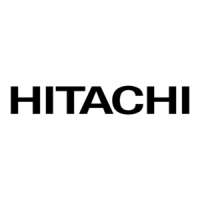

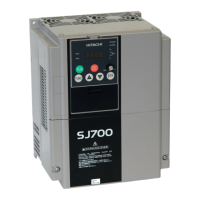


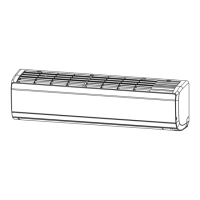
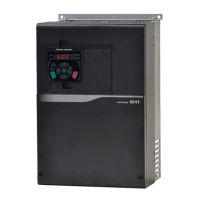
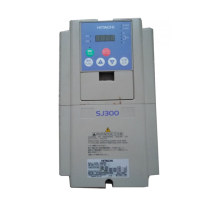

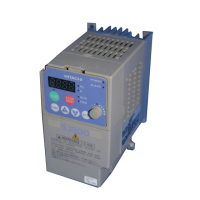
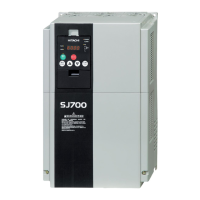

